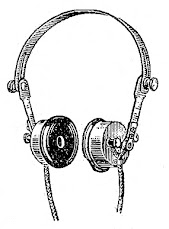
"[...] The Walkman seemed to inaugurate a new era within global modernity, creating from outside the West a variant of what cultural theorist Raymond Williams described as “mobile privatization.” Characterized as a condition of “unprecedented mobility of [highly] restricted privacies,” Williams sees the concept embodied in the automobile.
Looked at from right outside, the traffic flows and their regulation are clearly a social order of a determined kind, yet what is experienced inside them — in the conditioned atmosphere and internal music of this windowed shell — is movement, choice of direction, the pursuit of self–determined private purposes. All the other shells are moving, in comparable ways but for their own different private ends. They are not so much other people, in any full sense, but other units which signal and are signaled to, so that private mobilities can proceed safely and relatively unhindered. And if all this is seen from outside as in deep ways determined, or in some sweeping glance as dehumanized, that is not at all how it feels like inside the shell, with people you want to be with, going where you want to go.
This inside/outside dialectic of the automobile, which also engages in its own forms of social noise through the use of the car horn and car stereo, is repeated in a different way with the Walkman and particularly the cell phone. In these latter cases, one might perceive the different relation to the body within Japanese modernity, in which a certain distance from nature is typical and for which, in recent times, digital gadgets have compensated . The shell created by the Walkman or cell phone is not physical so much as affective, created by the learned ability to sink into the aural, visual, and tactile experience of the particular device and, in the case of the cell phone, its networks of communication. [...]"
Sumanth Gopinath
Ringtones, or the auditory logic of globalization
Looked at from right outside, the traffic flows and their regulation are clearly a social order of a determined kind, yet what is experienced inside them — in the conditioned atmosphere and internal music of this windowed shell — is movement, choice of direction, the pursuit of self–determined private purposes. All the other shells are moving, in comparable ways but for their own different private ends. They are not so much other people, in any full sense, but other units which signal and are signaled to, so that private mobilities can proceed safely and relatively unhindered. And if all this is seen from outside as in deep ways determined, or in some sweeping glance as dehumanized, that is not at all how it feels like inside the shell, with people you want to be with, going where you want to go.
This inside/outside dialectic of the automobile, which also engages in its own forms of social noise through the use of the car horn and car stereo, is repeated in a different way with the Walkman and particularly the cell phone. In these latter cases, one might perceive the different relation to the body within Japanese modernity, in which a certain distance from nature is typical and for which, in recent times, digital gadgets have compensated . The shell created by the Walkman or cell phone is not physical so much as affective, created by the learned ability to sink into the aural, visual, and tactile experience of the particular device and, in the case of the cell phone, its networks of communication. [...]"
Sumanth Gopinath
Ringtones, or the auditory logic of globalization

